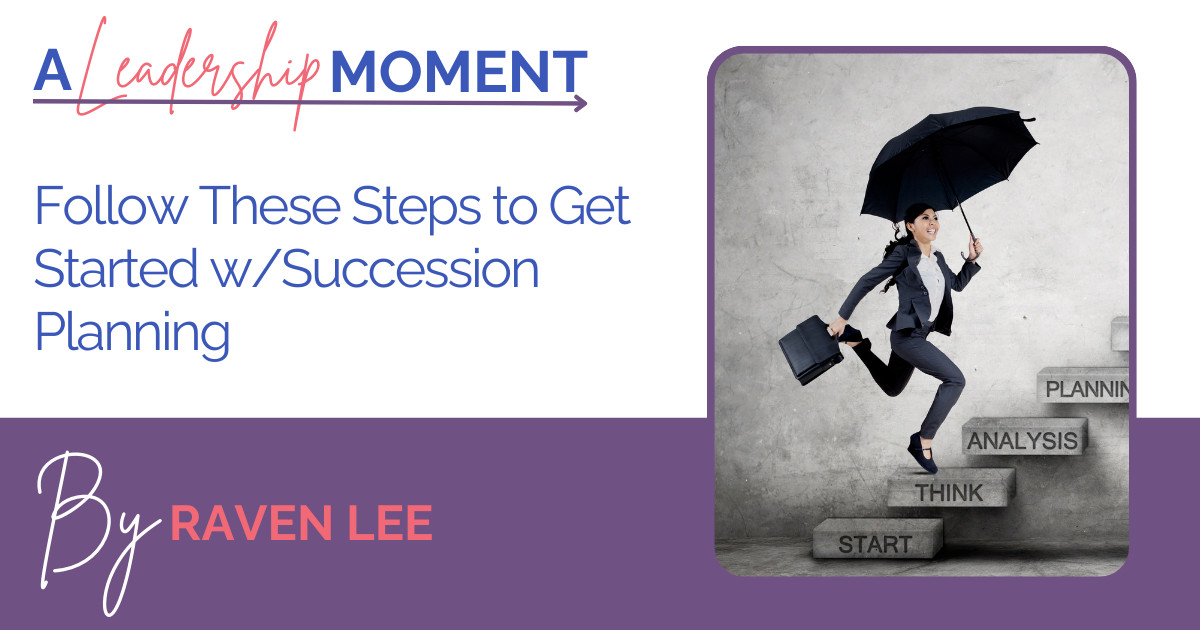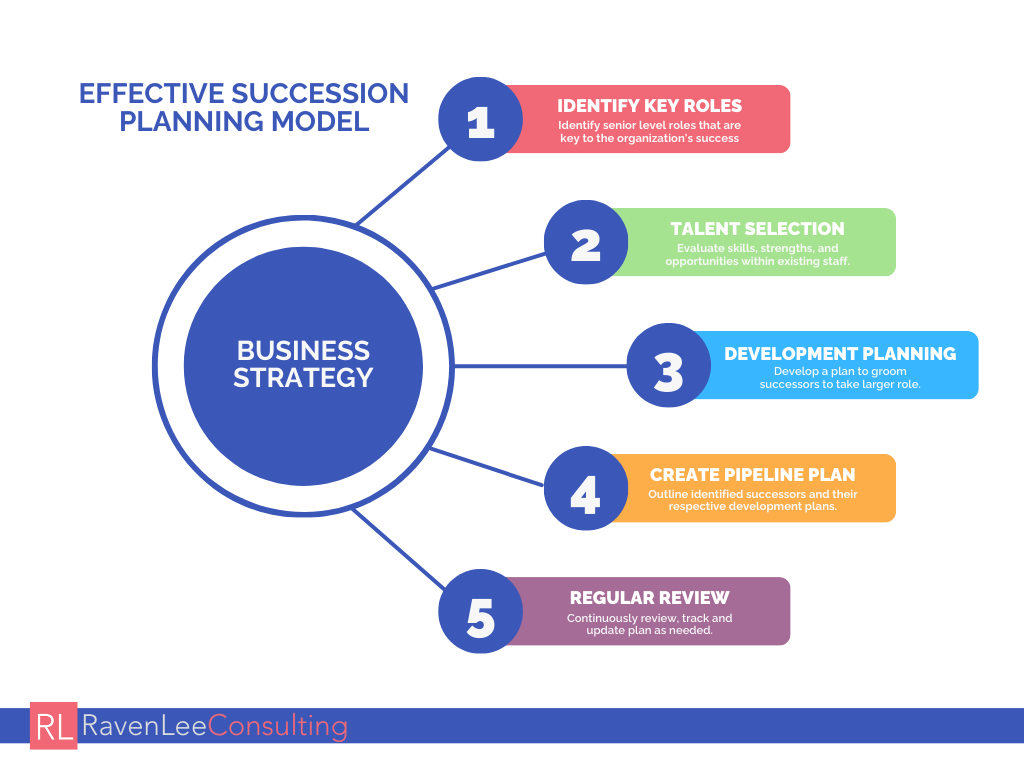
As we have been discussing this week in our Succession Planning series, effective succession planning has emerged as a critical strategy for organizations aiming to sustain their success and seamlessly transition leadership roles. Succession planning is not merely a reactive measure but a proactive approach to ensure the continuity of leadership and organizational stability.
To recap, succession planning is more than just identifying a successor for a senior executive. It is a strategic process that aligns the organization's goals with its talent pipeline, ensuring a smooth transition during critical leadership changes. Recognize that succession planning minimizes disruption, safeguards institutional knowledge, and maintains stakeholder confidence. We covered the importance of succession planning in our previous blog post, The Importance of Succession Planning for Long-Term Success. In this comprehensive guide, we outline the key steps to embark on a successful succession planning journey.
Identify Key Roles and Competencies
Begin by identifying the pivotal leadership roles within your organization. Determine the competencies, skills, and attributes that define success in these roles. Assess the gap between the existing talent pool and the desired competencies, thus forming the foundation for targeted development initiatives.
Assess Potential Successors
Conduct a review of internal talent to select potential successors for each role identified in Step 1. Hold talent review sessions to thoroughly understand potential successors and objectively evaluate their readiness for leadership roles. Utilize a combination of performance reviews, competency assessments, and feedback. Document strengths and areas for growth for each successor. Create individualized development plans that address identified areas for growth and enhancement.
Create a Robust Development Plan
Craft a comprehensive development plan for each identified successor. This plan should outline the specific actions, experiences, and training required to bridge competency gaps and prepare them for elevated roles. Emphasize cross-functional exposure, strategic thinking, and effective communication skills.
Create an Organizational Pipeline Plan
To ensure a seamless transition, cultivate a pool of potential successors for each critical role. This bench strength mitigates risks associated with unexpected departures and provides flexibility in choosing the most suitable candidate. Regularly review and update the bench to align with evolving business needs. This is your organization’s succession map and should be maintained centrally with regular check-ins with leaders to ensure that development is happening as outlined in the individual development plans.
Continuous Review and Adjustment
Succession planning is not a static process but an ongoing endeavor. Regularly review and refine your succession strategy based on emerging industry trends, business shifts, and feedback from stakeholders. Adapt the development plans to incorporate new skill requirements and leadership expectations. Additionally, it’s important to periodically evaluate and revise the succession planning strategy. Regularly evaluate the effectiveness of your succession planning efforts. Analyze the outcomes of leadership transitions, identifying areas of success and areas needing improvement. Continuously refine your approach based on these insights to optimize the process.

An effective Succession Planning strategy begins with the business strategy in mind.
Once you understand your business strategy, you can address your talent needs effectively. ~Raven Lee
Cultivating the Right CultureThe steps above will get you started with building a successful succession plan. However, it’s important that the right culture is created that can support succession planning practices. Below are a few considerations for establishing a culture that supports succession planning. Transparent CommunicationMaintain transparent communication with potential successors about their development plans and growth trajectories. This fosters trust, commitment, and a sense of ownership. Address their concerns and aspirations, ensuring they are aligned with the organization's vision. Celebrate Succession AchievementsRecognize and celebrate successful leadership transitions resulting from your succession planning efforts. Showcase these achievements as a testament to your organization's commitment to cultivating internal talent and ensuring sustained growth. Nurture a Leadership Development CultureCultivate a culture that emphasizes leadership development at all levels. Establish mentoring programs, leadership workshops, and ongoing training to foster the growth of potential successors. Encourage executives to share their experiences and insights, contributing to a knowledge-sharing ecosystem. Also, encourage leaders to have routine career conversations with the employees on their teams. These conversations are critical to creating a transparent environment where development is prioritized for all employees. Finally, foster an environment that rewards leaders for developing talent and seeing them move on to larger roles within the organization. |
The Wrap Up
The proactive implementation of succession planning is no longer optional; it is a strategic imperative. By following these steps, organizations can create a robust succession planning framework that fosters leadership continuity, maintains institutional knowledge, and propels sustained success. The journey toward effective succession planning requires dedication, strategic alignment, and a commitment to nurturing leadership potential.









 I
I









0 Comments